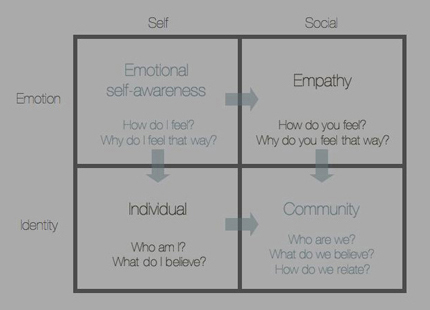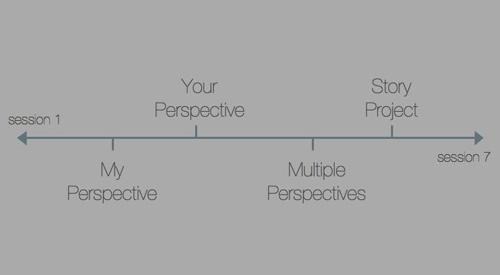overview
How do I see the world? How do you see the world? How can we understand each other, solve problems collaboratively, and express ourselves?
beyond the looking, to the seeing is a workshop in seven parts that explores these questions through programming, storytelling, and perspective-taking activities. The purpose of this document is to share the workshop’s approach with other educators, and to provide getting-started guidance.
programming
Scratch is a new programming language that makes it easy to create and share your own interactive stories, animations, games, music, and art.

This workshop guide assumes that a facilitator already has some familiarity with Scratch. If this is not the case, a facilitator may want to visit the Scratch support page and review the Getting Started and Reference guides for an introduction.
storytelling
Sharing narratives or stories is a powerful way to communicate experiences and understandings between people. By cultivating their storytelling capacities, individuals are enabled to connect with others. Whether storytelling is framed as journalism or as creative writing, the skills emphasized in this workshop are asking thoughtful questions, listening actively, and being respectful of representations.
perspective-taking
Recognizing and understanding another’s framing and understanding of the world is a practice in which people consciously and unconsciously engage on a daily basis. The workshop makes explicit this practice of perspective-taking and frames it as a process or collection of trajectories. These trajectories are spaces for people to explore participation individually (self) and collectively (social), as well as to explore representation internally (emotion) and externally (identity).

This workshop pursues these trajectories by considering three overarching themes: my perspective, your perspective, and multiple perspectives.
